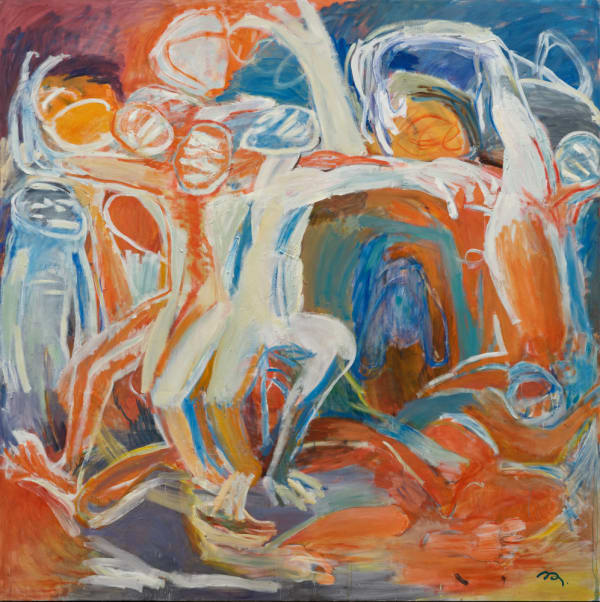Tang Dixin
Ota Fine Arts Shanghai is pleased to present a solo exhibition by Chinese artist, Tang Dixin. Born and raised in Hangzhou, Tang later moved to Shanghai to study painting at the Shanghai Normal University. He now lives and works in Shanghai. Tang was active in creating and producing breakthrough performance works “Act of God” (2010), “Rest is the Best Way of Revolution” (2013) and for conceptualizing “HUGE HUGE” (2018), a collaborative endeavour that brought various artists together to create an arts festival held at the Sifang Art Museum, Nanjing. His exhibition will feature 10 new paintings created in 2023.
Increasingly, Tang’s paintings are defined by seemingly random and accidental brushstrokes. When asked about his impulses, Tang responded with a fantasy narrative, “ancient tribesmen who went out hunting during the day, and returned to their caves at night, fed themselves with the imagination and thrill of blood and flesh. Armed with exciting images etched in their heads, they sketched with burnt charcoal the freshness of what they had captured during the day. The hunted being their rival, a fear and a life force.”
Characters are hardly alone in his paintings; a crowd is everywhere. They are stacked against or on top of one another. The density of the crowds has grown, a slight shift from his earlier paintings. In this exhibition, “Ice Cream” and “Grassfield” are elongated, with dimensions of 240 x 120 cm. The works are compressed, extended upwards, and its characters huddled together. Hands, arms and feet struggle to find their place. It takes much visionary strength to enact bodily tensions onto a two-dimensional plane. Such similar body tensions can also be felt in Tang’s earlier performance works including “A Road is Being Transport” (2016) and “Mr. Hungry No.1” (2014).
“Rolling”, “Grain” and “In the Waves” appear as landscapes. Human bodies are morphed into the scenery in the background. Tang attributes such an occurrence to the illusion of his eyes and the error of his brush. Often, he does not set out with any image in mind. Composition is ambiguous at the start, yet with a play on surface and depth, figuration and abstraction and vibrant washes of colour, a mountain load of people evolves into a seascape or mountainscape.
There is always quite a lot going on in Tang’s paintings, erasure and addition, excess and restrain, action and rest, they work hand in hand to enact Tang’s imaginations. Consciously or subconsciously, his paintings are often situated in a sense of flux and continuous movement. They continue to embody his imaginations even when completed. The meanings of each painting are often tantalizingly out of reach, yet they offer unreal excursions into Tang’s fantasies.





